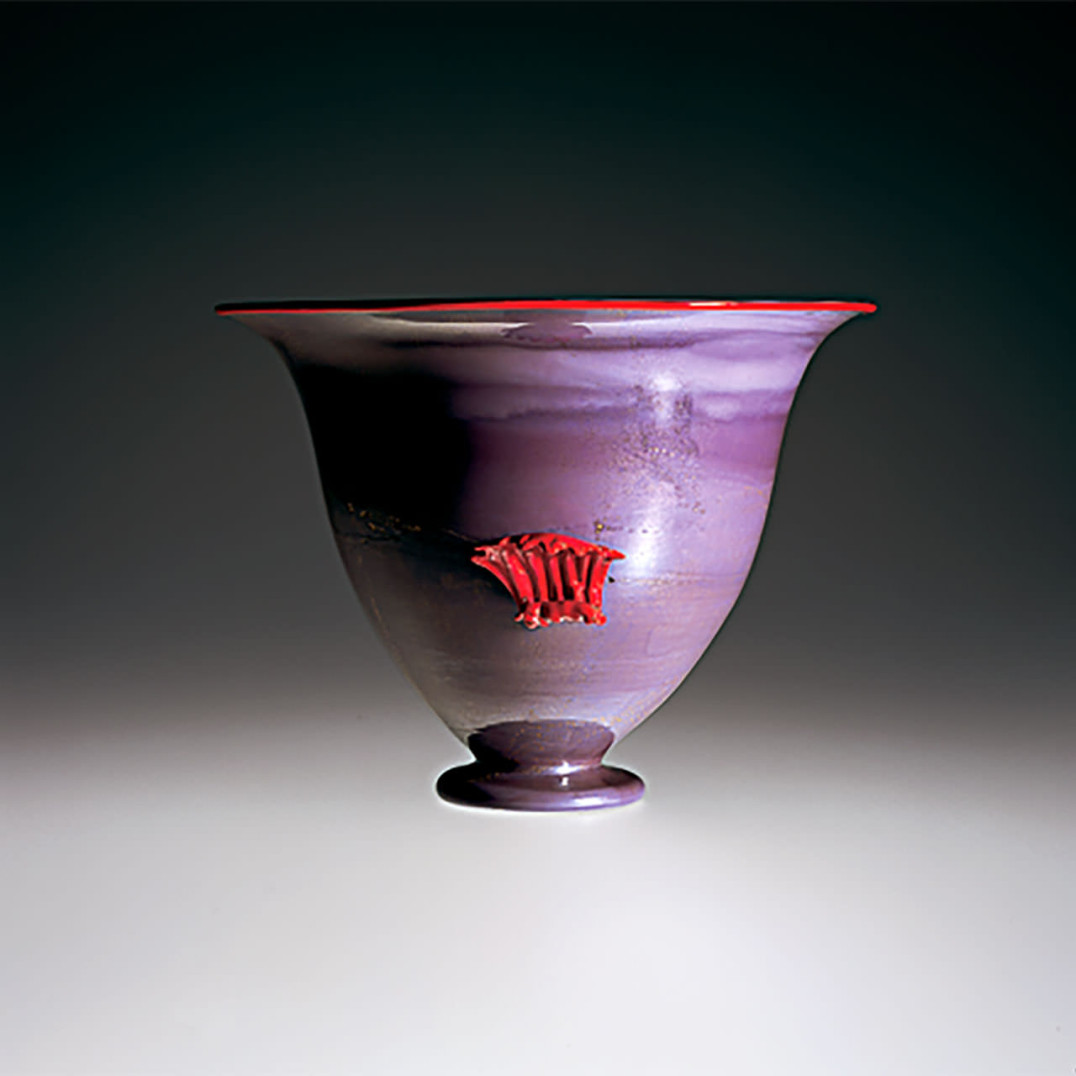
Carlo ScarpaIncamiciato, 1930

Carlo ScarpaIncamiciatoMaestri Vetrai Muranesi Cappellin & C., 1930
A large footed vase decorated with a shell in lattimo glass, cased in amethyst-colored glass. The shell and trim in red pasta vitrea. Light applications of gold leaf over the entire surface.
10 3/4 in. high (27.3 cm)
Ø; 14 11/16 in. (37.3 cm)
Exhibitions:
1930, Monza, 4th Esposizione Internazionale delle Arti Decorative e Industriali Moderne;
1931, Amsterdam, Exhibition of modern Italian glass, ceramic, and artistic lacework, Stedelijk Museum;
1964, Venice, 32nd Biennale Internazionale d’Arte, Exhibition of the Decorative Arts of the Venetian Territory;
2000, New York, Venetian Glass, Museum of Arts & Design;
2001, Milan, Murano: Vetri dalla Collezione Olnick Spanu, Spazio Oberdan.
Bibliography and comparative texts:
Dedalo, 1930, fasc. V, p. 321;
Domus, 1930, July, p. 41;
C.A. Felice, 1930, nn. 12, 30, 40, 81, 82;
U. Nebbia, 1930, p. 13;
R. Pacini, 1930, p. 273;
C.A. Felice, 1941, p. 81;
Vetri Murano…, 1981, p. 33;
Vetri di Murano…, 1982, n. 125;
Mostra del vetro…, 1984, pp. 81, 84;
M. Heiremans, 1996, nn. 85, 86;
F. Deboni, 1996, nn. 70, 71;
M. Barovier, 1997, pp. 198, 199;
M. Barovier, 1999, p. 141;
Olnick Spanu, 2000, n. 32;
Olnick Spanu, 2001, n. 53.
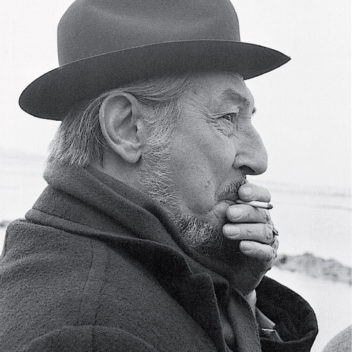
Carlo Scarpa 1906–1978
Born in Venice, Carlo Scarpa graduated from the Accademia di Belle Arti in Venice in 1926. Soon after his graduation he began work at M.V.M. Cappellin, where he soon replaced Vittorio Zecchin as artistic director. Following the direction laid down by Zecchin, he initially created transparent blown-glass pieces with essential forms, in particular the pieces exemplified by their conic base. Scarpa later designed light glass pieces in brightly colored pasta vitrea, or decorated fenici. Deservedly famous was the refined collection of lattimi decorated with gold or silver leaf, which he presented for the first time in Monza in 1930 together with the canne verticali and millefiori glass works. Giacomo Cappellin closed the workshop in 1932 for bankruptcy, putting an end to the collaboration with Carlo Scarpa. In 1934, Scarpa became the artistic director of Venini & C., where he continued to work through 1947. Alongside Paolo Venini, who often participated in the design of glass, Carlo Scarpa experimented with the vast potential of glass, using and innovating many traditional techniques, by which he created extraordinary modern pieces. After the mezza filigrana glass works came the sommersi, the pasta vitrea inspired by Chinese ceramic motifs, the corrosi, the battuti, the vessels a fasce colorate, a pennellate, the variegati, and the famous multicolored murrine with the surfaces finished at the carving wheel. After World War II, Carlo Scarpa worked almost exclusively as an architect and teacher.
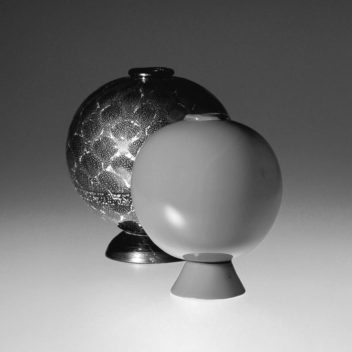
Maestri Vetrai Muranesi Cappellin & C. 1925–1932
M.V.M. Cappellin & C. was founded in 1925 by Giacomo Cappellin after the closing of Cappellin Venini & C. Vittorio Zecchin, a painter from Murano who had worked for Cappellin Venini, continued his collaboration with Cappellin for a short time, designing soffiati, blown glass pieces characterized by delicate colors and pure lines. At the end of 1926, following Zecchin's departure, the young Carlo Scarpa took over the artistic direction of the company. Initially, he proceeded along the course taken by his predecessor, creating lightweight blown pieces with simple geometric forms. These were followed by many collections of refined elegance characterized by various transparent textures and often distinguished by vivid colors. Despite the remarkable success at the 1930 Biennale di Monza, M.V.M. Cappellin & C. was forced to close in January 1932. This was most likely the result of inefficient financial management.
Carlo ScarpaIncamiciato, 1930
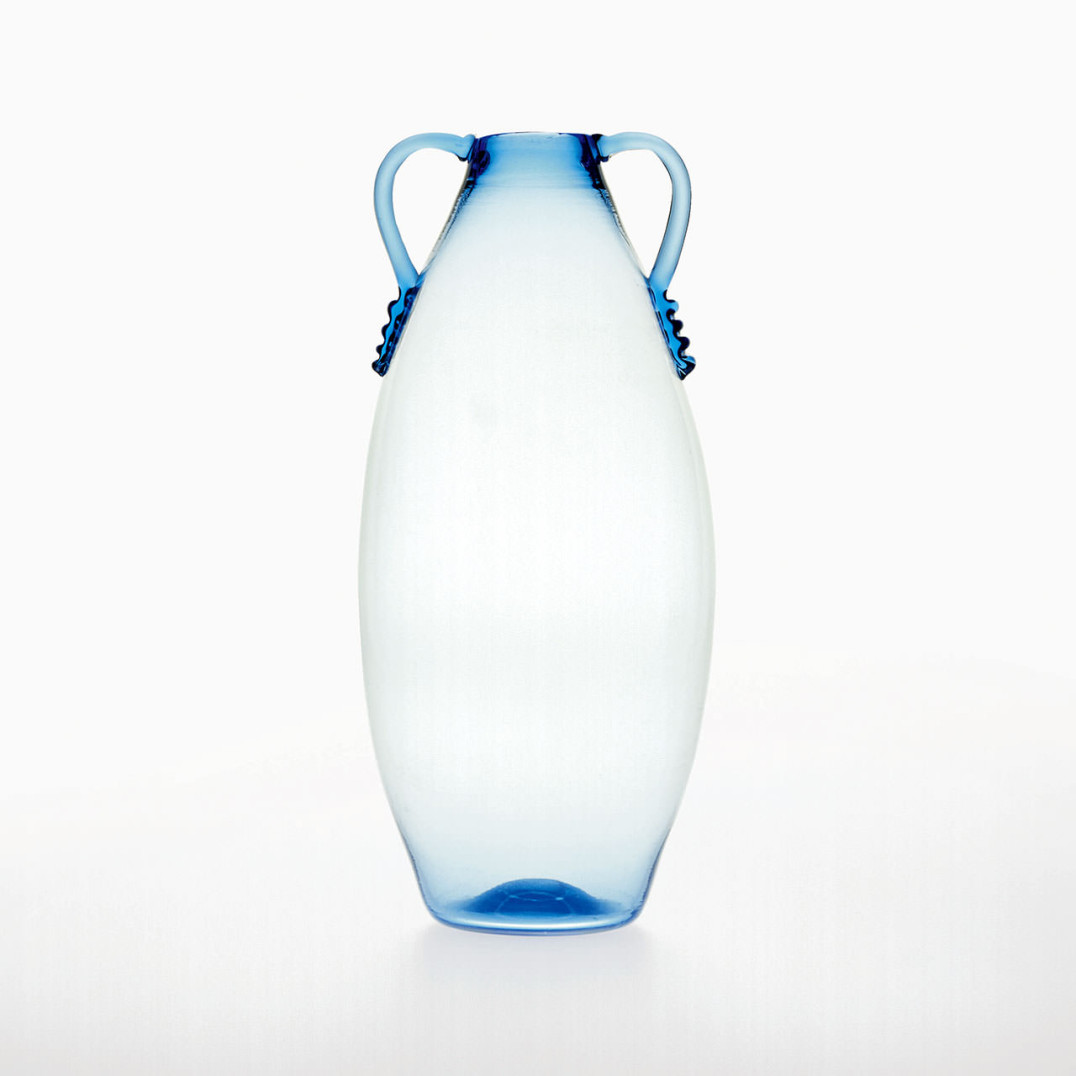
Vittorio ZecchinTrasparente, 1921-1925
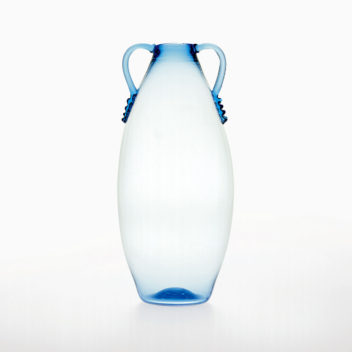
Vittorio ZecchinTrasparenteVetri Soffiati Muranesi Cappellin Venini & C., 1921-1925
A thin light blue transparent glass vase with applied handles. After the closing of the Vetri Soffiati Muranesi Cappellin Venini & C., this style was added to the catalogue of the M.V.M. Cappellin & C., as model number 5293.
16 1/4 in. high (41.2 cm)
Exhibitions:
2000, New York, Venetian Glass, Museum of Arts & Design;
2001, Milan, Murano: Vetri dalla Collezione Olnick Spanu,
Spazio Oberdan.
Bibliography and comparative texts:
A. Venini Diaz de Santillana, 2000,
n. 10;
Olnick Spanu, 2000, n. 10;
Olnick Spanu, 2001, n. 15.
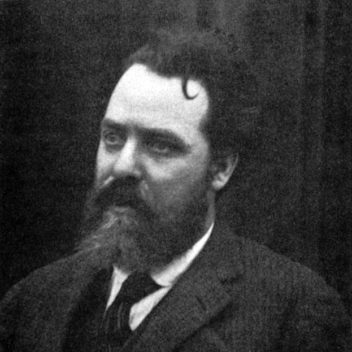
Vittorio Zecchin 1878–1947
Painter, decorator, and designer Vittorio Zecchin was the son of a glassblower from Murano. Upon graduating from the Accademia di Belle Arti di Venezia, he joined the Secessionist movement of Cà Pesaro where he showed his paintings inspired by the Viennese movement on many occasions. In 1913, in Munich, together with Teodoro Wolf Ferrari, he exhibited glass panels and vessels a murrine made by the Artisti Barovier, which represented the attempt to bring the Secessionist style to Murano glass. From 1921 to 1925, he was artistic director of the Vetri Soffiati Muranesi Cappellin Venini & C., where he created lightweight glass pieces, classically inspired and delicately colored, which earned him immediate success in Italy and abroad. Inspired by the styles painted in the works of sixteenth-century painters in the Veneto, these vessels were the first modern works in Murano glass. After a short period as artistic director of the Maestri Vetrai Muranesi Cappellin & C., he collaborated with S.A.L.I.R. in the '30s, providing drawings for glass engraving and personally decorating glass with enamels. He occasionally worked for Ferro Toso (1930), A.VE.M. (1932), and Seguso Vetri d'Arte (1933-34). At Fratelli Toso (1938), he created the elegant goblets Leggerissimi. During the '20s and '30s, Zecchin also designed tapestries, mosaics, embroidery, ceramics, furniture, silverware, all of which he exhibited at the Biennale di Venezia and the Biennale di Monza. During the last years of his life, he dedicated himself to teaching.
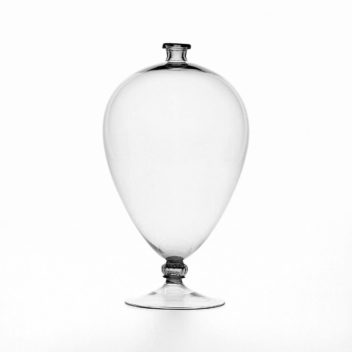
Vetri Soffiati Muranesi Cappellin Venini & C. 1921–1925
Cappellin Venini & C. was founded in 1921 after the meeting of the Venetians Giacomo Cappellin and Luigi Ceresa, the Milanese Paolo Venini, and the German-born Emilio Ochs. It first settled in the furnace abandoned by Andrea Rioda. Rioda had died prematurely, leaving the technical direction of his company to Giovanni Seguso, better known to some as Patare. Under the artistic direction of Vittorio Zecchin, Cappellin Venini & C. produced collections characterized by essential forms, some of which were inspired by the Renaissance glass pieces reproduced by sixteenth-century painters in the Veneto region. The company received widespread acclaim at the major exhibitions of decorative arts of the '20s such as the Biennale di Monza (1923, 1925), the Biennale di Venezia (1924), and the Paris Exposition (1925). Cappellin and Venini separated due to irreconcilable differences, and the company was closed in May of 1925. Subsequently, Paolo Venini and Ochs took the furnace and created a new company named Vetri Soffiati Muranesi Venini & C. Giacomo Cappellin took the glassblowers and Vittorio Zecchin with him and founded a new company with a new furnace: the Maestri Vetrai Muranesi Cappellin & C.
Vittorio ZecchinTrasparente, 1921-1925
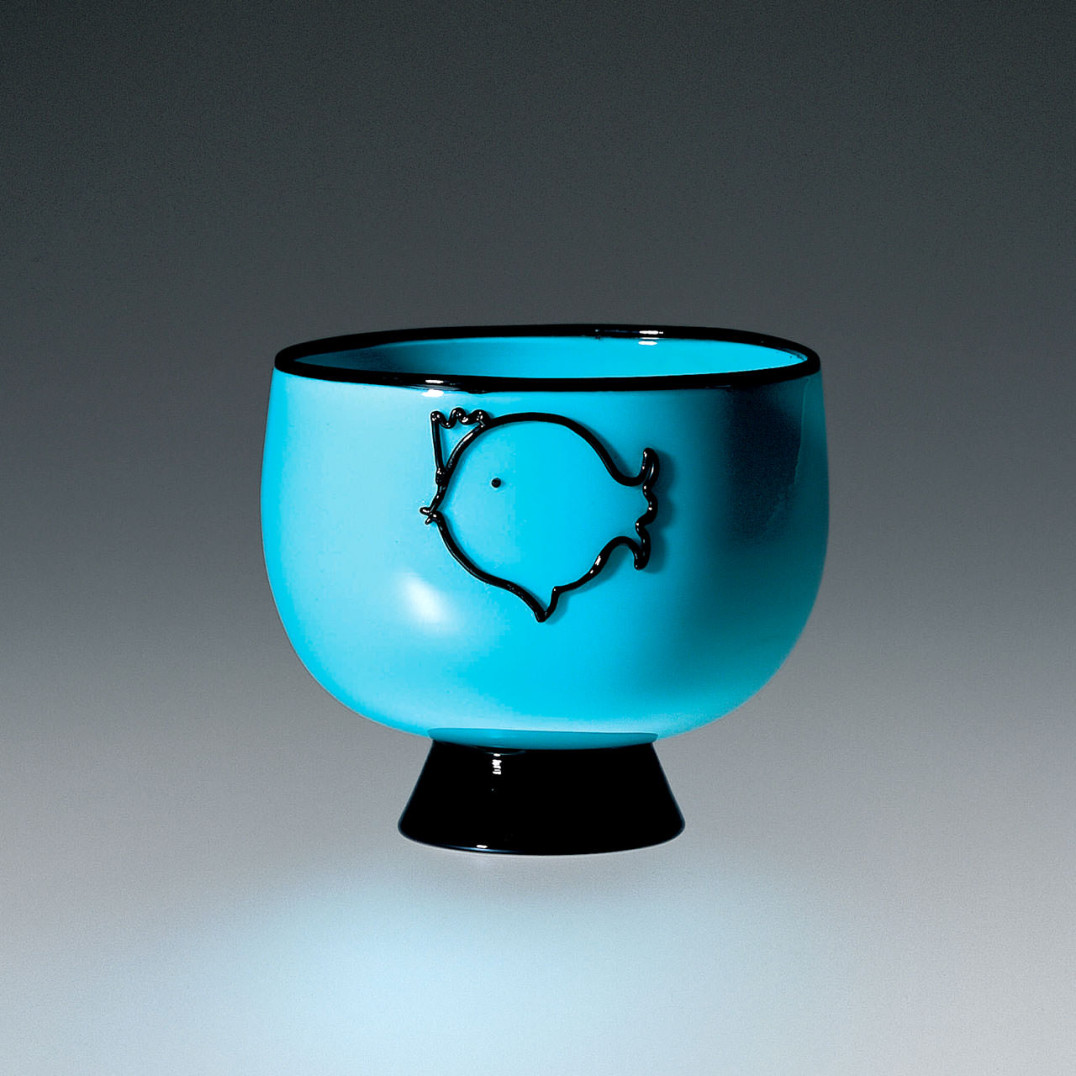
Tommaso BuzziTurchese e nero, 1932
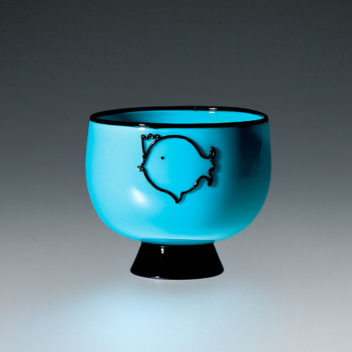
Tommaso BuzziTurchese e neroV.S.M. Venini & C., 1932Maestri Vetrai Muranesi Cappellin & C., 1932
A turquoise glass bowl with a black conic foot with applied outlined fish.
Fish decor and trim in black glass.
Paper label: Vetri Soffiati Muranesi Venini & C.,
4 1/4 in. high (10.8 cm)
Exhibitions:
1932, Venice, 18th Biennale Internazionale d’Arte;
2000, New York, Venetian Glass, Museum of Arts & Design;
2001, Milan, Murano: Vetri dalla Collezione Olnick Spanu,
Spazio Oberdan.
Bibliography and comparative texts:
P. Chiesa, 1932, p. 417;
F. Deboni, 1989, n. 36;
M. Barovier, R. Barovier Mentasti,
A. Dorigato, 1995, n. 28;
F. Deboni, 1996, p. 73;
A. Venini Diaz de Santillana, 1996, n. 51;
Olnick Spanu, 2000, n. 33;
Olnick Spanu, 2001, n. 54.
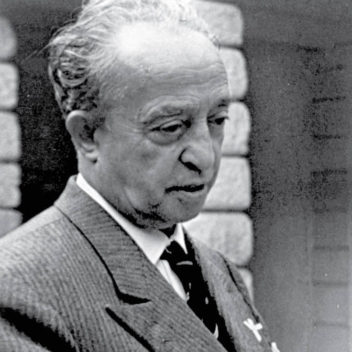
Tommaso Buzzi 1900–1981
Architect and designer Tommaso Buzzi was born in Sondrio and graduated in Architecture at the Politecnico di Milano. In Milan, he worked in the fields of architecture, interiors, graphic design, set design, and applied arts. In 1927, he joined the association Il Labirinto, founded to "promote the spreading of modern decorative arts in the home," to which Paolo Venini, Giò Ponti, Carla Visconi di Modrone, Emilio Lancia and Pietro Chiesa also belonged. From 1932 to 1934, he was artistic director at Venini & C., for whom he designed a very refined series of works. They were characterized by the elegant Novecento styles in lattimo and opaque turquoise glass with black detailing and clear pieces with branch-like applications. Experimenting with traditional techniques, he also designed vessels and bowls with unusual colors. His best-known series—his Alba, Laguna, and Alga—are known for their pastel tones, which were created by using several successive thin layers of glass and then a final application of gold leaf. After World War II, Buzzi concluded his experience with glass art and dedicated himself to painting.
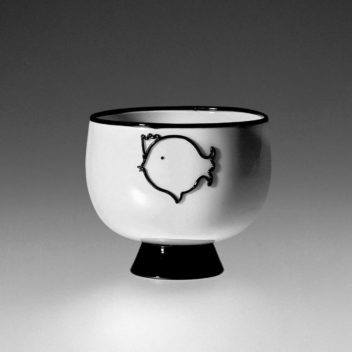
V.S.M. Venini & C. 1925–1932
In 1925, following the closing of Cappellin Venini & C., Paolo Venini founded his own glass company, which he called Vetri Soffiati Muranesi Venini & C. (V.S.M. Venini & C.). While the company, under the artistic direction of sculptor Napoleone Martinuzzi, produced collections designed by Vittorio Zecchin, it soon became known for the pulegosi, an original style created by Venini and Martinuzzi. In 1932, both Martinuzzi and Zecchin left the company. Paolo Venini changed the name of the company to Venini & C. and Milanese architect Tommaso Buzzi became the new artistic director.

Maestri Vetrai Muranesi Cappellin & C. 1925–1932
M.V.M. Cappellin & C. was founded in 1925 by Giacomo Cappellin after the closing of Cappellin Venini & C. Vittorio Zecchin, a painter from Murano who had worked for Cappellin Venini, continued his collaboration with Cappellin for a short time, designing soffiati, blown glass pieces characterized by delicate colors and pure lines. At the end of 1926, following Zecchin's departure, the young Carlo Scarpa took over the artistic direction of the company. Initially, he proceeded along the course taken by his predecessor, creating lightweight blown pieces with simple geometric forms. These were followed by many collections of refined elegance characterized by various transparent textures and often distinguished by vivid colors. Despite the remarkable success at the 1930 Biennale di Monza, M.V.M. Cappellin & C. was forced to close in January 1932. This was most likely the result of inefficient financial management.
Tommaso BuzziTurchese e nero, 1932
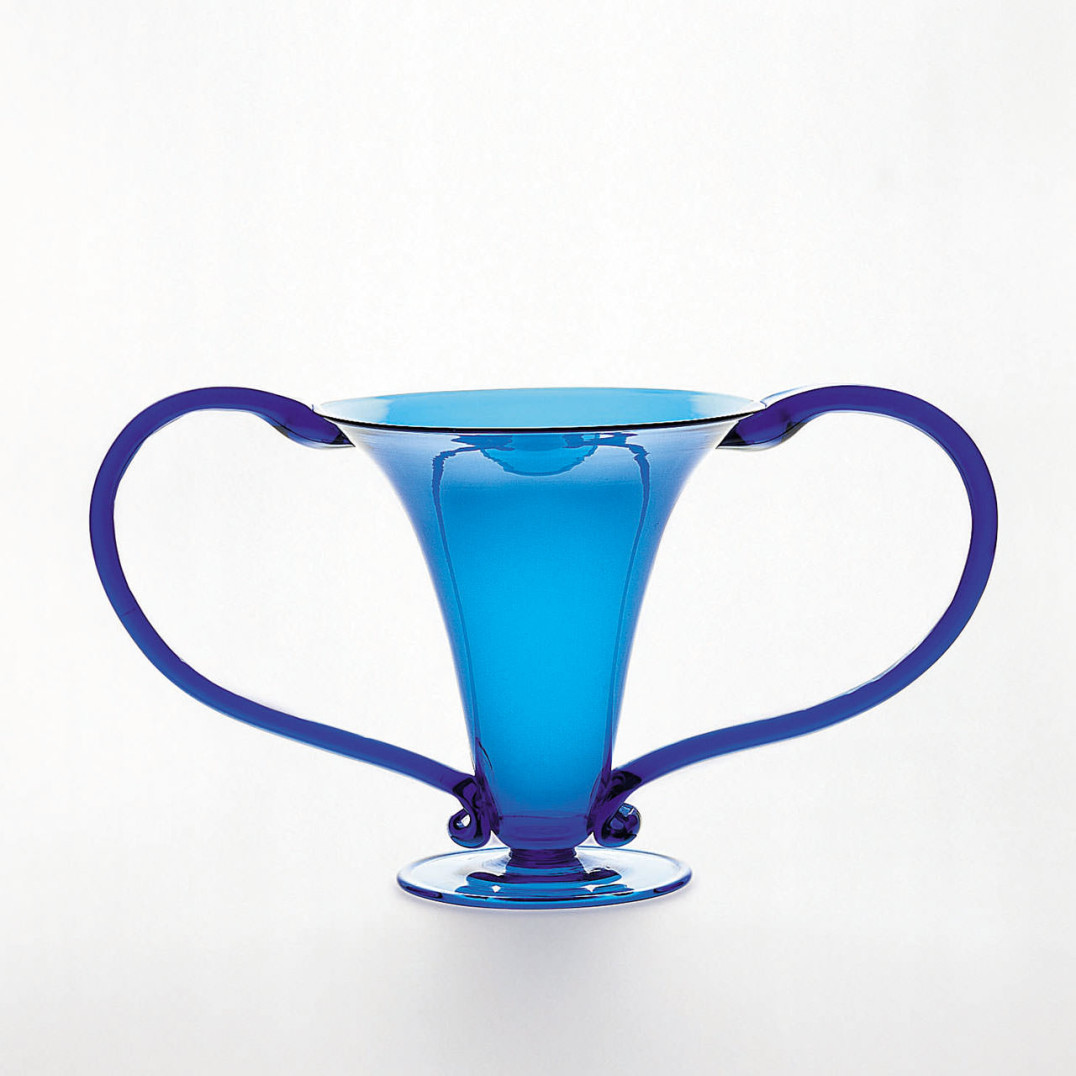
Vittorio ZecchinLibellula, 1921-1925
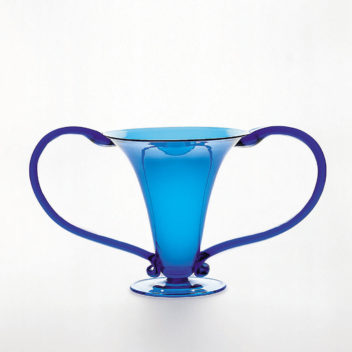
Vittorio ZecchinLibellulaVetri Soffiati Muranesi Cappellin Venini & C., 1921-1925
Vase in thin blue transparent glass. It is distinguished by its two large handles, which cause it to resemble a dragonfly, hence, its name. After the 1925 closing of V.S.M. Venini & C., the model was included in both the M.V.M. Cappellin & C., (n. 5481) and the V.S.M. Venini & C., (n. 1432) catalogues.
Acid stamped: M.V.M. Cappellin Murano.
7 in. high (17.8 cm)
Exhibitions:
1923, Monza, 1st Esposizione Internazionale delle Arti Decorative;
1924, Venice, 14th Biennale Internazionale d’Arte (?);
2000, New York, Venetian Glass, Museum of Arts & Design;
2001, Milan, Murano: Vetri dalla Collezione Olnick Spanu,
Spazio Oberdan.
Bibliography and comparative texts:
C. Carrà, 1923, p. 67;
R. Linzeler, 1923, p. 84;
R. Papini, 1923;
R. Barovier Mentasti, 1982, n. 253;
Mille anni…, 1982, n. 501;
W. Neuwirth, 1987, n. 110;
F. Deboni, 1989, p. 35;
L’arte del vetro…, 1992, n. 306;
M. Heiremans, 1993, n. 192;
M. Barovier, R. Barovier Mentasti,
A. Dorigato, 1995, n. 15;
M. Barovier, 1999, p. 104;
Olnick Spanu, 2000, n. 11;
Olnick Spanu, 2001, n. 16;
M. Barovier, 2002, n. 123.

Vittorio Zecchin 1878–1947
Painter, decorator, and designer Vittorio Zecchin was the son of a glassblower from Murano. Upon graduating from the Accademia di Belle Arti di Venezia, he joined the Secessionist movement of Cà Pesaro where he showed his paintings inspired by the Viennese movement on many occasions. In 1913, in Munich, together with Teodoro Wolf Ferrari, he exhibited glass panels and vessels a murrine made by the Artisti Barovier, which represented the attempt to bring the Secessionist style to Murano glass. From 1921 to 1925, he was artistic director of the Vetri Soffiati Muranesi Cappellin Venini & C., where he created lightweight glass pieces, classically inspired and delicately colored, which earned him immediate success in Italy and abroad. Inspired by the styles painted in the works of sixteenth-century painters in the Veneto, these vessels were the first modern works in Murano glass. After a short period as artistic director of the Maestri Vetrai Muranesi Cappellin & C., he collaborated with S.A.L.I.R. in the '30s, providing drawings for glass engraving and personally decorating glass with enamels. He occasionally worked for Ferro Toso (1930), A.VE.M. (1932), and Seguso Vetri d'Arte (1933-34). At Fratelli Toso (1938), he created the elegant goblets Leggerissimi. During the '20s and '30s, Zecchin also designed tapestries, mosaics, embroidery, ceramics, furniture, silverware, all of which he exhibited at the Biennale di Venezia and the Biennale di Monza. During the last years of his life, he dedicated himself to teaching.

Vetri Soffiati Muranesi Cappellin Venini & C. 1921–1925
Cappellin Venini & C. was founded in 1921 after the meeting of the Venetians Giacomo Cappellin and Luigi Ceresa, the Milanese Paolo Venini, and the German-born Emilio Ochs. It first settled in the furnace abandoned by Andrea Rioda. Rioda had died prematurely, leaving the technical direction of his company to Giovanni Seguso, better known to some as Patare. Under the artistic direction of Vittorio Zecchin, Cappellin Venini & C. produced collections characterized by essential forms, some of which were inspired by the Renaissance glass pieces reproduced by sixteenth-century painters in the Veneto region. The company received widespread acclaim at the major exhibitions of decorative arts of the '20s such as the Biennale di Monza (1923, 1925), the Biennale di Venezia (1924), and the Paris Exposition (1925). Cappellin and Venini separated due to irreconcilable differences, and the company was closed in May of 1925. Subsequently, Paolo Venini and Ochs took the furnace and created a new company named Vetri Soffiati Muranesi Venini & C. Giacomo Cappellin took the glassblowers and Vittorio Zecchin with him and founded a new company with a new furnace: the Maestri Vetrai Muranesi Cappellin & C.
Vittorio ZecchinLibellula, 1921-1925
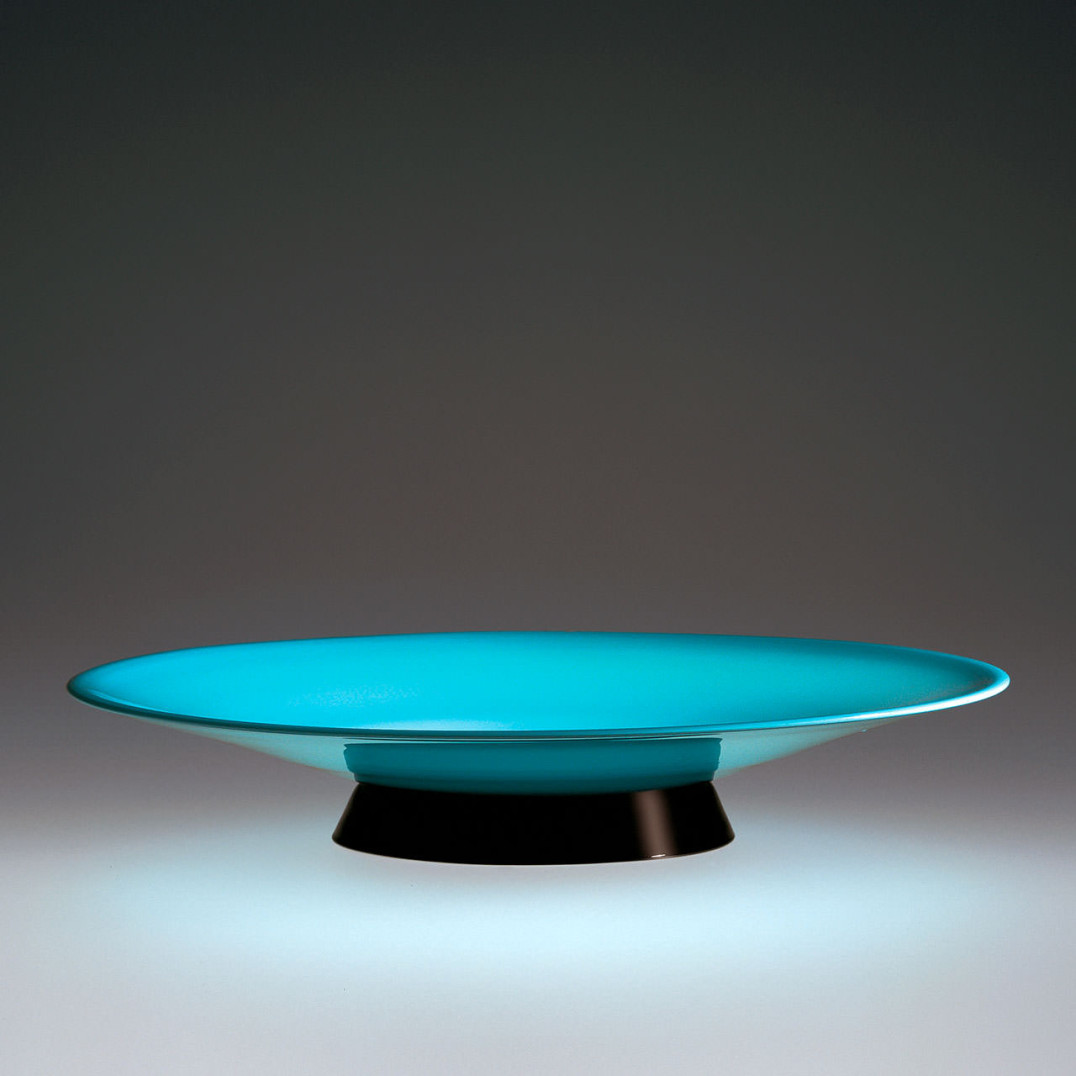
Tommaso BuzziTurchese e nero, 1932
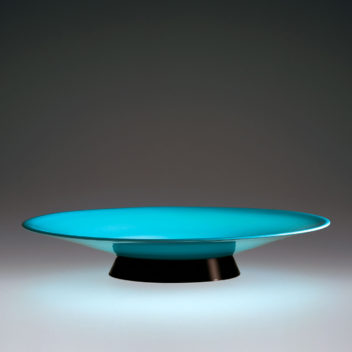
Tommaso BuzziTurchese e neroV.S.M. Venini & C., 1932
Footed plate in turquoise glass with conical foot in black pasta vitrea.
Acid stamped:
venini murano.
2 3/4 in. high (7 cm)
Ø; 17 5/16 in. (44 cm)
Exhibitions:
1932, Venice, 18th Biennale Internazionale d’Arte;
2001, Milan, Murano: Vetri dalla Collezione Olnick Spanu,
Spazio Oberdan.
Bibliography and comparative texts:
Venini, blue catalogue, n. 3261;
Domus, 1932, July, p. 417;
F. Deboni, 1989, n. 37;
M. Romanelli, 2000, p. 78;
Venini. Catalogo…, 2000, p. 126, nn. 77-78;
Olnick Spanu, 2001, n. 55.

Tommaso Buzzi 1900–1981
Architect and designer Tommaso Buzzi was born in Sondrio and graduated in Architecture at the Politecnico di Milano. In Milan, he worked in the fields of architecture, interiors, graphic design, set design, and applied arts. In 1927, he joined the association Il Labirinto, founded to "promote the spreading of modern decorative arts in the home," to which Paolo Venini, Giò Ponti, Carla Visconi di Modrone, Emilio Lancia and Pietro Chiesa also belonged. From 1932 to 1934, he was artistic director at Venini & C., for whom he designed a very refined series of works. They were characterized by the elegant Novecento styles in lattimo and opaque turquoise glass with black detailing and clear pieces with branch-like applications. Experimenting with traditional techniques, he also designed vessels and bowls with unusual colors. His best-known series—his Alba, Laguna, and Alga—are known for their pastel tones, which were created by using several successive thin layers of glass and then a final application of gold leaf. After World War II, Buzzi concluded his experience with glass art and dedicated himself to painting.

V.S.M. Venini & C. 1925–1932
In 1925, following the closing of Cappellin Venini & C., Paolo Venini founded his own glass company, which he called Vetri Soffiati Muranesi Venini & C. (V.S.M. Venini & C.). While the company, under the artistic direction of sculptor Napoleone Martinuzzi, produced collections designed by Vittorio Zecchin, it soon became known for the pulegosi, an original style created by Venini and Martinuzzi. In 1932, both Martinuzzi and Zecchin left the company. Paolo Venini changed the name of the company to Venini & C. and Milanese architect Tommaso Buzzi became the new artistic director.